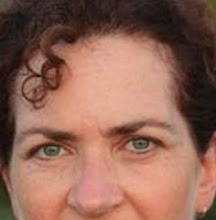 We’re on that bumpy road to autumn.
We’re on that bumpy road to autumn.
Where chilly mornings give way to hot afternoons.
And a light jacket becomes your best friend—never too far from reach.
We received, after weeks without, a day of rain.
Just enough to brighten the fading colors of summer in the field and leave its dust-spattered signature on my newly cleaned windows.
It seems drier in these last several years, than I can ever remember.
The grass on the lawn, crunchy and brown.
Trees’ leaves, curled and already fallen.
A sort of sad scene, as fall can sometimes be. Especially when the eagerly awaited colors are missing from the landscape.
I find myself lingering longer.
Not wanting to go inside until I have found something more uplifting.
And, by finding it, remind myself that it is always there.
To be found, if I am patient.
Like bright spots peeking through bent grasses.


Or a single orange butterfly that lights on the brown seed heads of Tall Ironweed, and then skips on—
to Asters!

And the mystery plant, when all around is brown, boasting leaves in shades of orange, crimson and burgundy--
poison ivy!





















































%20copy.jpg)



















24 comments:
No,I can't guess what the colored leaves are,but I do like the picture.It looks so soft.Also like the Asters,they sure put on a grand display.
Wonderful fall shots. So glad you found the butterfly.
Merci pour le passage et le commentaire
new
It has been mighty dry here too Nina. We are on the Northern edge of a drought. My Sister lives an hour drive south of here and it is even been drier. Scary. It is like the western drought of several years is moving its way east.
Your current dryness sounds like central PA in all of August. But then it started raining here--for much of September. That has "saved" our fall--the leaves will turn lovely colors here.
No guess on your mystery leaf--do tell!
Fall colors abound. The crisp oranges and vibrant yellows and reds fill the trees.
A hint for you--
Beautiful fall colors you do NOT want to collect!
They have to be poison ivy. But lovely, as are all the pictures. I love the asters. Such beautiful color.
I was thinking poison ivy...How soft the browns and greys are, and then that lovely butterfly, and the bright, cheerful asters!
I didn't think poison ivy turned colours. So my guess would be poison sumac.
Loved your pics - autumn is a rather sad time, until we adjust.
Today was quite cold (10 C) and with a wind felt even worse.
Ack!
P I !
Run, Nina! Run!
Yeay! Another nature enthusiast! :-) Love your photos and bog, Nina! :-) And how refreshing to see another species of butterfly outside of the commonly seen sulphurs and whites, this time of year! :-)
I love all these pictures but the aster is really pretty. For poison ivy to be so rotten, it such is pretty with it's turning leaves.
Wonderful - you got me with the Aster! :)
Cheers, Klaus
I find myself not leaving a hike until I find something amazing too! lol...it was always there. I know how that feels.
Amazing aster photos, very striking.
Nina- After doing some brief research, I believe that if the butterfly you have photographed is a gorgone checkerspot, it would be a species new to Ohio. It could also be a pearl crescent, Phyciodes tharos.
Tom
Gosh, Tom--I don't know. I keep looking at the description and pictures I'm working from and they show black dots within the orange spots as checkerspots. Look especially at the lower edge of the forewings.
I'll keep searching for a sure ID--I was hoping it still could be Gorgone--field guide says there are Great Lakes states and Atlantic populations found.
That will be my job for the evening--I appreciate your interest in this--I'll take any suggestions.
Ok, now I'm really confused.
Is there some distinguishing feature that really sets them apart?
Or is it basically a geographic distinction?
So you all know, not all of what are/were the USDA butterfly ID sites are totally updated because it's a huge job and understaffed. We have some Skippers and Ringlets we see all the time in our area, but they are not listed as being this far north.
And trying to tell the difference between all the Blues, Checkerspots, etc isn't always that glaringly obvious. Some species also vary in appearance in "summer" or "fall" or some may have faded, making it almost impossible to ID.
When I was the Butterfly House Coordinator at Beaver Creek Reserve here in WI, I told my volunteers not to stress over trying to ID some of the harder ones. Blues were Blues, Coppers were Coppers, and Checkerspots were Checkerspots unless we knew for sure what we had flying.
Of course, there were lots of visitors who would look them up in the books and positively ID more than one species of Coppers flying in the house at one time, which we always tried to encourage! :-) Some species can give you a real headache trying to ID, though!
I learn this lesson again and again--that IDs are tricky, especially without the unknown in hand. And that variations in coloring and distribution compound the possibilities.
Like a hoof print that could be a zebra, but more likely not, I guess it is better to be more conservative with naming them.
It's so hard, isn't it, because we really want to know what they are! :-)
Nina- Any type of checkerspots are fairly rare in Ohio. I've never knowingly seen one. However, the pearl crescent, which looks very similar, is a butterfly that I see almost every time I am out in the field. What is even more crazy is that the two are even in different genera, yet look so much alike. One thing to do is check the Ohio Leps website at http://www.ohiolepidopterists.org/ If you click on the survey tab, you can search by county to see which species have been documented for your county or surrounding counties. If you see something that hasn't been recorded for your county, it is possible that you have a new county record. I took a stab and guessed that you were in Warren County, and there is a species called a silvery crescentspot, Charidryas nycteis, that looks darn similar to all the other crescents/checkerspots. I'm just at the cusp of learning butterflies myself.
Have fun, keep taking butterfly pictures, they are fun to learn.
Tom
Wonderful to see the autumn through your eyes.
Post a Comment